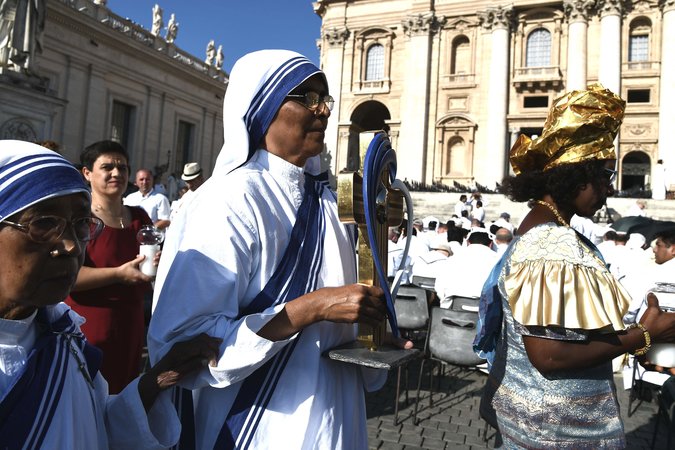Mother Teresa was long considered a saint by many people around the world. On Sunday morning, Pope Francis officially bestowed that title at her canonization ceremony in St. Peter’s Square.
The canonization marked a highlight of the Jubilee year that Francis had proclaimed to celebrate the theme of mercy. On Saturday, he told thousands of cheering volunteers gathered in St. Peter’s Square that Mother Teresa was a “witness to mercy in our time.”
Of her canonization, he said, “She deserves it.”
A portrait of Mother Teresa, the Roman Catholic nun described by Pope John Paul II as an “icon of the good Samaritan,” is displayed on the facade of St. Peter’s Basilica and shows the saint-to-be in her distinctive blue-trimmed white sari. The portrait was commissioned by the Knights of Columbus and painted by Chas Fagan, an American artist.

Mother Teresa earned fame and accolades over a lifetime spent working with the poor and the sick, and with orphans, lepers and AIDS patients, first in the slums of Kolkata, India, and then in many other countries.
She made the cover of Time magazine in December 1975 for an article that acknowledged her as one of the world’s “living saints.” When told that she had won the Nobel Peace Prize in 1979, she said, “I am unworthy.”
Mother Teresa’s supporters praise her selflessness and humility, noting that though she associated with royalty, government leaders and popes, she continued to live simply until her death in 1997.
“She was one with us,” said Sister Mary Prema Pierick, the superior general of the Missionaries of Charity, the religious order founded by Mother Teresa in 1950, at Vatican news conference on Friday. “She never wanted or accepted anything not common with all the sisters.”
The order that Mother Teresa started with 12 nuns now numbers more than 5,800 people in 139 countries, including two orders of brothers and one of priests. The congregation continues her work of ministering to the world’s least privileged, those she called “the poorest of the poor.”
Mother Teresa was “both mother and teacher,” Sister Prema said. “She lived the religious life with so much joy and enthusiasm that we all wanted to be close with her.”







